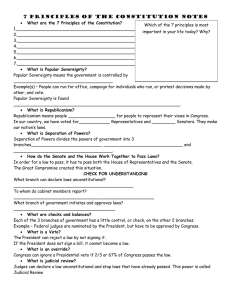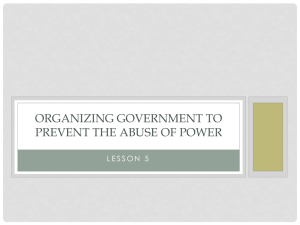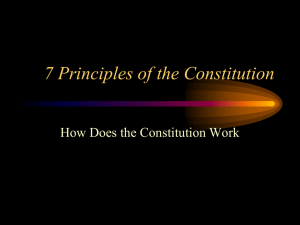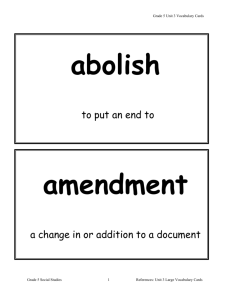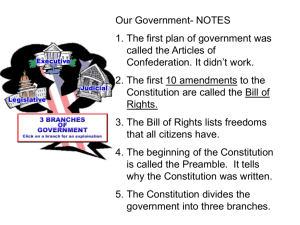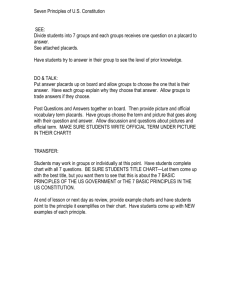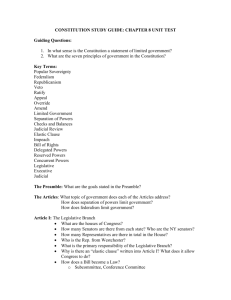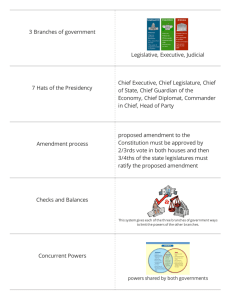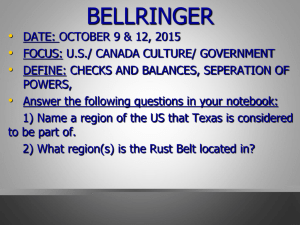Lesson Plan
advertisement
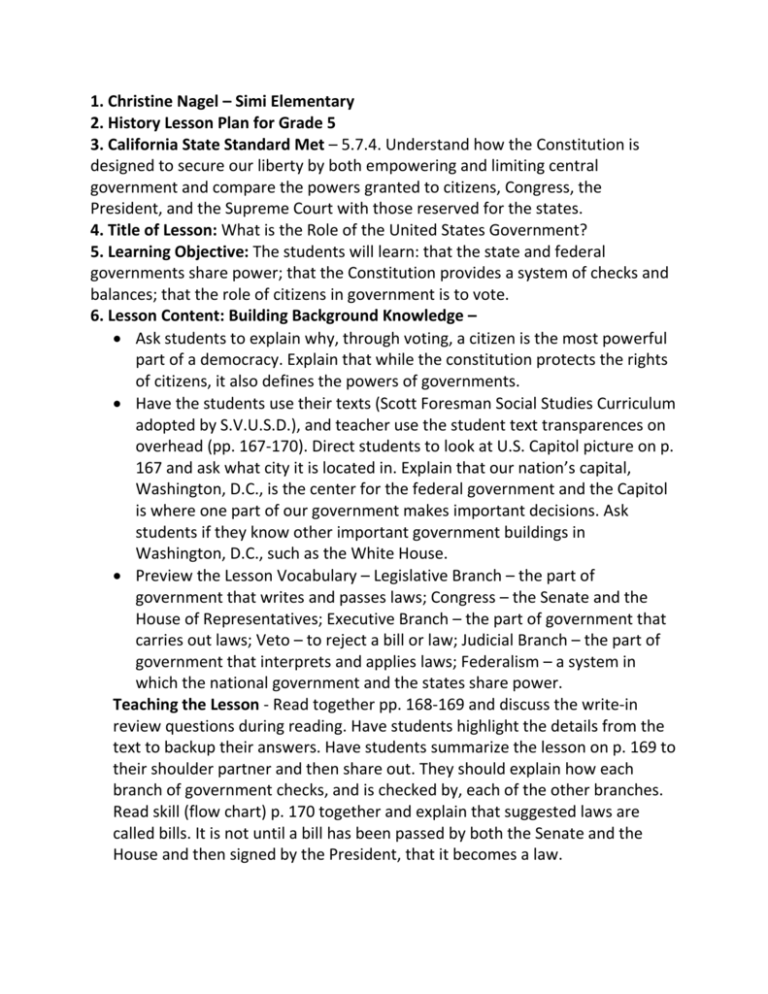
1. Christine Nagel – Simi Elementary 2. History Lesson Plan for Grade 5 3. California State Standard Met – 5.7.4. Understand how the Constitution is designed to secure our liberty by both empowering and limiting central government and compare the powers granted to citizens, Congress, the President, and the Supreme Court with those reserved for the states. 4. Title of Lesson: What is the Role of the United States Government? 5. Learning Objective: The students will learn: that the state and federal governments share power; that the Constitution provides a system of checks and balances; that the role of citizens in government is to vote. 6. Lesson Content: Building Background Knowledge – Ask students to explain why, through voting, a citizen is the most powerful part of a democracy. Explain that while the constitution protects the rights of citizens, it also defines the powers of governments. Have the students use their texts (Scott Foresman Social Studies Curriculum adopted by S.V.U.S.D.), and teacher use the student text transparences on overhead (pp. 167-170). Direct students to look at U.S. Capitol picture on p. 167 and ask what city it is located in. Explain that our nation’s capital, Washington, D.C., is the center for the federal government and the Capitol is where one part of our government makes important decisions. Ask students if they know other important government buildings in Washington, D.C., such as the White House. Preview the Lesson Vocabulary – Legislative Branch – the part of government that writes and passes laws; Congress – the Senate and the House of Representatives; Executive Branch – the part of government that carries out laws; Veto – to reject a bill or law; Judicial Branch – the part of government that interprets and applies laws; Federalism – a system in which the national government and the states share power. Teaching the Lesson - Read together pp. 168-169 and discuss the write-in review questions during reading. Have students highlight the details from the text to backup their answers. Have students summarize the lesson on p. 169 to their shoulder partner and then share out. They should explain how each branch of government checks, and is checked by, each of the other branches. Read skill (flow chart) p. 170 together and explain that suggested laws are called bills. It is not until a bill has been passed by both the Senate and the House and then signed by the President, that it becomes a law. 7. Methods/Strategies used to make sure students are engaged and involved – reading aloud text and highlighting answers; partner share questions and answers with vocabulary; using whiteboards with answers for specific powers of federal and state for Venn diagram; small groupings for branches of government to chart responsibilities and share whole class. 8. Check for Understanding during the Lesson Have students use each vocabulary word to form a question about something they learned in the lesson on their whiteboards and have them partner up to answer each other’s questions. Draw a Venn diagram on the Board with one circle labeled “Federal” and one labeled “State”. Looking back at the section, have students underline sentences that explain the specific powers. Then have the students on their whiteboards hold up specific powers they found for federal and state and fill in the Venn diagram with their answers. Remind them that the ones in the center are shared powers by both federal and state and ask them what those would be looking back in the reading. Assign students to be in groups: executive group, legislative group, and judicial group. Have them chart on a poster the responsibilities of their particular branch of government assigned and share poster with the class what that is. 9. Lesson Assessment – Have students on paper: 1. List each branch of government and what their responsibility is. 2. Why did Congress include the system of checks and balances in the Constitution? 3. How does the system of federalism protect states’ rights? 4. How can you prepare to exercise your power as a responsible citizen? 10. For English Learners – Have students illustrate the three branches of government by using the branches of a tree. Then have them complete the writing prompt – There are three branches of government because…… For Special Needs – Draw three circles. Label each with one of the three branches of government. Draw lines between the circles and label with key words and phrases to tell what the responsibilities of each branch are. For GATE – Ask students to explain in writing how a government without three branches of government could become too powerful. Ask them to give examples of what could happen if there was just one governing body in federal and state government.

